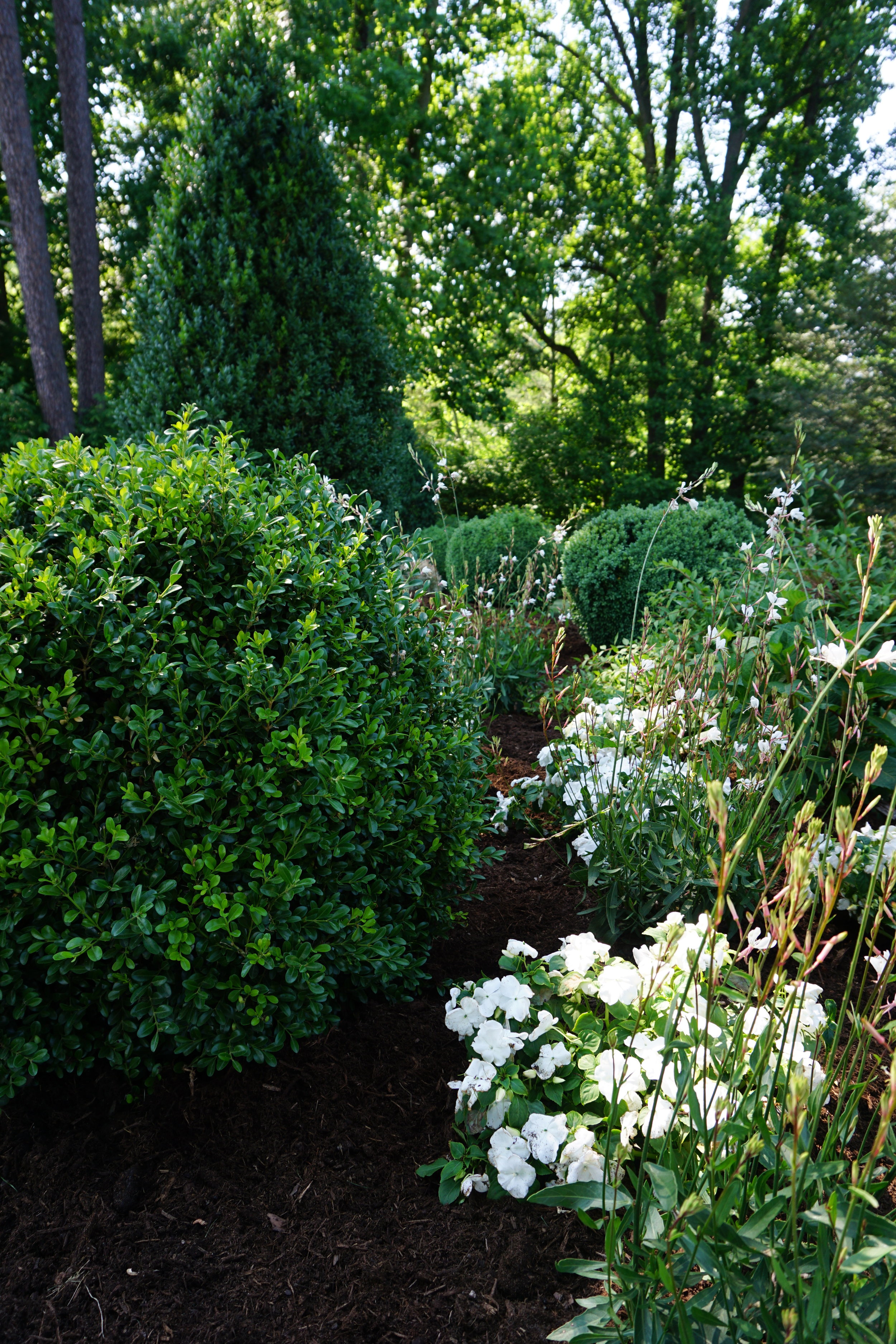Boxwood being used as a hedge in a landscape.
Boxwood are known for low maintenance and longevity in a landscape, but in order to ensure such timelessness, it is important to select the best site for the plant. When properly planted and cared for, boxwood are easy to maintain. Paying extra attention at planting will ensure a flourishing plant for years to come.
In choosing the proper site, we recommend the following:
Several boxwood in a shady site.
Choose the best cultivar based on size, shape, growth rate, maintenance, and exposure.
Take a soil sample and have it tested. Look for areas of good drainage with a pH in the range of 6.5-7.0.
Prepare a proper hole, making sure to plant the boxwood “high” with 2 inches of the root ball above the soil line. Be sure that water drains away from the plant and does not puddle near the root ball.
Water thoroughly at the time of planting and maintain adequate but not excessive irrigation through the first couple of years.
Once the boxwood is properly planted, it is very important to water it. A thorough soaking at the time of planting is essential. This will probably be the most important watering this plant will ever have. Make sure to fully soak the root zone.
Boxwood being irrigated first thing in the morning.
Once this initial watering is complete, periodic watering should take place as needed. Allowing the root zone to dry between irrigation events will encourage root growth. We recommend approximately 1 inch of precipitation or irrigation per week for the first 1-2 years. Pay close attention during the hot and dry summer months, so that the boxwood does not stress. It is also important to pay attention that the plants have adequate moisture as winter approaches. In the Mid-Atlantic region of the United States, boxwood will continue to grow roots in the winter when the temperatures are still mild.
The arrows show holes on the drip tape where the irrigation water escapes.
Here the drip tape sits on top of a bed of field plants.
Drip irrigation is the ideal method for watering boxwood. Simple drip systems can be installed under the mulch and will offer thorough irrigation without wetting the foliage. In a drip system, water seeps from the drip tape without splashing. It enters the ground without puddling and conserves water. The rate of water from drip tape is very low, maybe a quarter of an inch per hour per emitter. Fungal diseases such as Boxwood Blight can be spread through water splashing that may occur with sprinkler methods of irrigation. If drip irrigation is not an option, make sure overhead watering takes place in the early morning, giving the leaves ample time to dry. It is important to never water boxwood in the late afternoon or evening because wet foliage through the night can lead to diseases and stress on the plant.
Raised beds ready for boxwood planting. It is very important that boxwood are planted “high” to avoid water pooling around the roots.
In 2018, Central Virginia had an annual rainfall of close to 90 inches, about double the normal amount. Boxwood throughout the region showed signs of stress, particularly those plants that were constantly in standing water. Whenever you plant boxwood, envision what the immediate landscape will look like after 3 inches of rain, and plant the boxwood in such a way that ensures water never puddles around the roots.
Giving added care before planting, boxwood are destined to succeed and maintain a timeless elegance in your garden.







